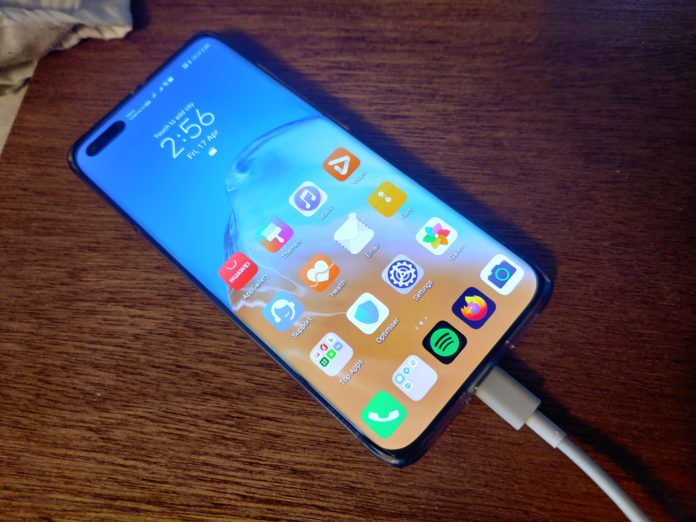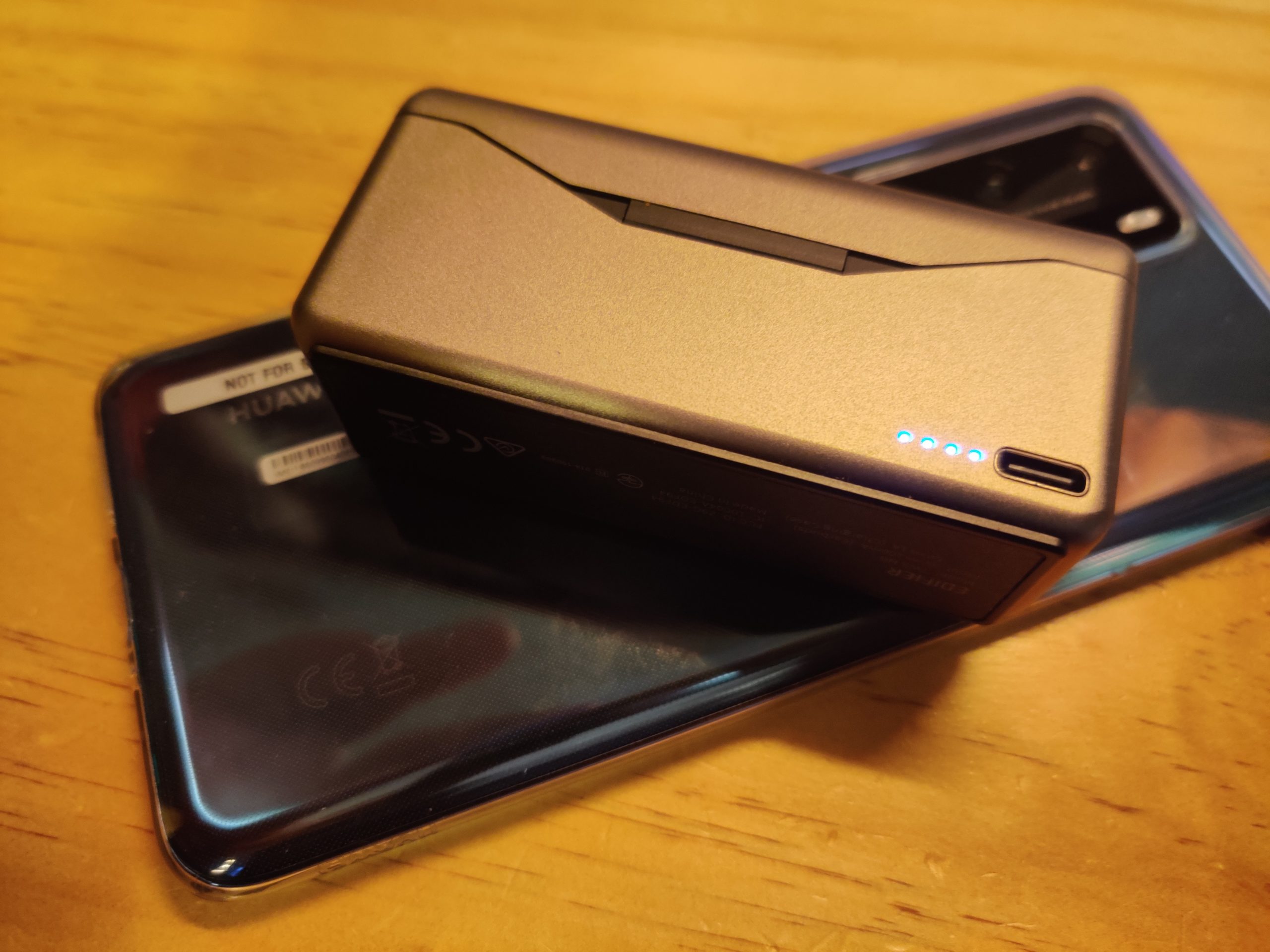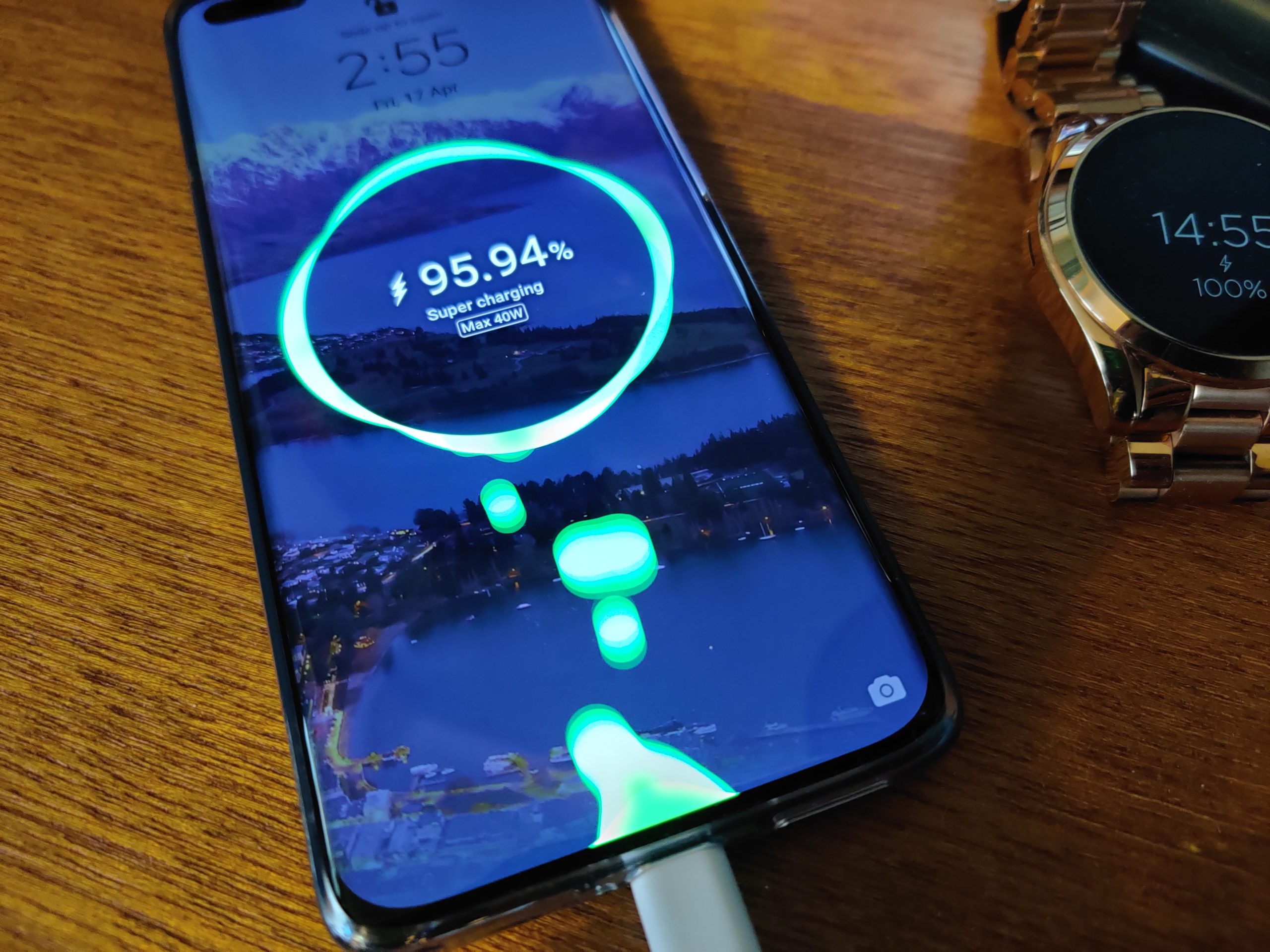The last few top range devices that Huawei has delivered have each had good battery life, Chris described the P30 pro battery as incredible. The P40 Pro continues that pathway with a big capacity battery that lasts a long time, but there is a couple of trade-offs.
Like previous iterations of the Huawei flagships, they have delivered fast charging. When they say fast, they mean it too with – on paper – the capacity to charge from dead flat to 75% in 30 minutes. Unlike some other recent devices, this doesn’t require you to go out and buy another charger for your device, the 40W fast charger is part of the package.
Unfortunately, I wasn’t able to test the wireless charging to its full capacity as there isn’t a wireless charger included and I don’t have a fast charging pad at home. That aside the battery life and charging options on the P40 Pro are truly impressive and need to be looked into.
Battery life
In recent times there have been a number of phones that have delivered battery life that can only be described as terrible. Devices that need to be charged late afternoon on an average day, far earlier if you’ve had a big day on the phone. The P40 Pro lasts a full day comfortably, even on a busy day with continual phone calls, streaming media, messaging and lots of screen on time.
There are a significant number of variables in how well a battery lasts. Data usage, background apps that may be consistently using a connection or waking the device to check for notifications. There are also a lot of tweaks and settings you can change on your device to preserve the battery life starting with screen brightness and refresh rate. In the early stages of my testing, I deliberately changed none of these and kept the default battery settings to ensure that an “average user” experience.
I’ll explore the screen and the experience that delivers in some later content, it’s important for this discussion to know that it is a 90Hz OLED panel at a resolution of 1,200 x 2,640 pixels at 441ppi and 19.8:9 aspect ratio. The whole system is being powered by a 4,200mAh battery, the same capacity as last years phone but in a model that is delivering more to the current day users.
My typical usage is a check of RSS feeds and email checks first thing in the morning, some news, YouTube (web version on the P40 Pro) and maybe some podcasts before work. During the day I’ll stream between 5 or 6 hours of music, check email, social media and messages as time allows during the day. So I’m a pretty heavy user and my phone has to endure a lot of screen on time.
Even on the default settings, I was getting to bedtime with anything up to 35% battery remaining. On one occasion when I really tried to hurt the battery I managed to get it to go flat after 17 hours off charge and a lot of video streaming. On lighter use days, I was plugging in at the end of the day with 50% or higher battery remaining and that got me thinking…
How long can this last without a charge?
The answer for me was realistically about two and a half days. After taking the P40 Pro off charge Friday morning before work, seeing the full day (as I was in meetings, the streaming was minimal) and all day Saturday there was 22% left when I want to bed on Saturday. By Midday on Sunday I was getting some very urgent noises emanating from the phone telling me I only had 5% battery left and to charge it up. A perfect opportunity to test Huawei’s claim of their 40W SuperCharger.
Wired Charging
Wired charging is the go-to for most users. Wired charging solutions are everywhere and for the time being, the fastest way to boost your battery. As mentioned already, the P40 Pro comes with a 40W SuperCharge solution and that thing is a beast. Not just to hold but in the speed. It can restore your battery from the dying gasps to a solid battery charge in the time it takes to change shirt, grab a drink and a bite to eat before you hit the town.
Unless you’re beyond brutal to your phone battery on a daily basis, you’re probably not going to need the insane charging speed. But it’s av real comfort to know what it’s capable of.
As you can see, in my home – not a lab test – the battery went from 5% battery at midday to 79% at 12:30. That’s a huge amount of battery for a pretty minimal time investment.
The time to go to full battery from 80% varied a little, but I honestly didn’t feel like it was a big deal. Even a 5 or 10 minute boost during the day would be more than enough for even heavy users and is still notably better than wireless charging.
Wireless Charging
A few blue moons back, I was quite a fan of wireless charging. The convenience of just dropping your phone on the right spot and getting a top-up is great. As batteries got better for smartphones, I found less use for it. So much so that until very recently I honestly didn’t see the feature as a sales point for me. Fast wireless charging is changing that attitude quickly though.
To test the wireless charging I had to drop by a local store as I only have an old Qi pad at home. The charging pads on display at JB Hi-Fi (thanks to my local store for letting me have a bit of freedom in there) were the Samsung Fast Charging 2.0 pads which provide 10W input, not the 27W that Huawei’s Wireless SuperCharger does.
The wireless charging on the Samsung pads worked fine, but clearly nowhere near as quickly as a 27W charger would..
If you buy a P40 Pro and want to venture down this pathway, you’ll need to be ready for the extra cost of around US$53
Having already tested, confirming that other branded chargers do work you could happily invest in a cheaper alternative. Providing you’re not relying on the speed of the 27W capability, only using the wireless for top-ups through the day.
Reverse wireless charging
Now the theory of reverse wireless charging is brilliant, you can provide power output wirelessly to other devices. The downside is that this causes battery loss for your device at a high rate, it causes some fairly significant heat on your device and you have to position the two devices perfectly for it to work.
I’ve reviewed phones where this was a feature in the past but, didn’t think it was a realistic option because the phone batteries just weren’t up to it. What I mean by this is that the battery on the phones I was testing struggled to last a day, so why would I sacrifice more battery to charge devices that need linking to the phone or to give friends charge when they’re struggling?
The most common use case I can honestly see for use of Reverse Wireless Charging is for users who have earphones that support wireless charging. I’ve done it, everyone has… Forget to charge your earphones and don’t have a charger with you. Just turn on the reverse wireless, give them a 20 minute boost before you leave work for the day and enjoy your tunes or podcasts all the way home. It’s just not a realistic option to charge other phones though as it doesn’t put out enough power to give any really useful power increase.
The experience with the P40 Pro battery
This is by far the best battery experience I’ve had with a mobile phone in a long time. The battery is a really good capacity, but with the software in place and the optimisation by Huawei, the battery life is outstanding. Adding to the positive battery experience with the P40 Pro is the charging capability in both wired and wireless charging pathways.
Even on my heaviest day of use – I’m a heavy user, but not brutal on the battery – I really didn’t feel an absolute need to find a top-up charge option. If I was heading out for a night on the town after a big day, 30 minutes would be more than sufficient to see the device through to dawn. Grabbing a wireless charger would allow you to continually top-up the battery throughout the day if you’re unfortunate enough to live on your phone.
You would have to be a very heavy user to exhaust this battery in a single day though. I’m genuinely impressed at what Huawei has delivered, it’s going to be an all-day battery for the vast majority of users. If your use does manage to exhaust the battery, then you’re likely to be used to charging continually through the day and very pleased with the charging options available for the P40 Pro.









How much of the battery use benefits is because of Google services not running?